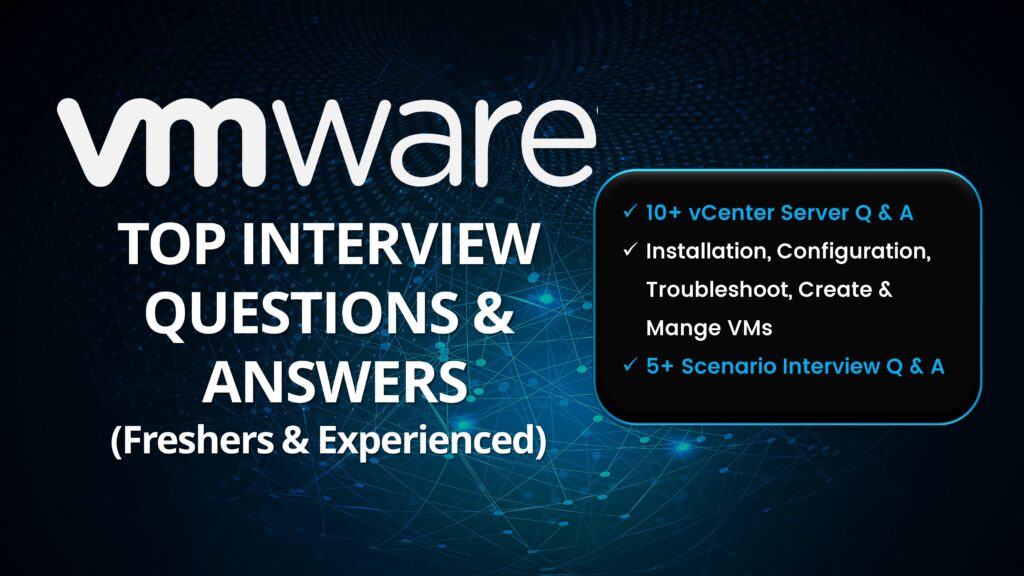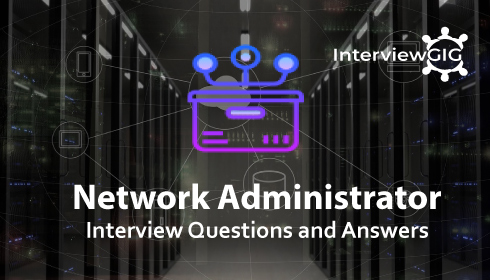What is MPLS?
MPLS stands for Multi-Protocol Label Switching. It is a method of switching packets using labels instead of IP addresses or Layer 3 information. Its Packet -Forwarding technology which uses MPLS labels for data forwarding decisions. MPLS packets can run on other layer 2 technologies such as ATM, FR, PPP, POS, Ethernet.
What are the MPLS Router Types?
C – Customer Router
CE- Customer Edge Router
PR – Provider Router
PE – Provider Edge Router
Can you explain MPLS Control Plane and Forwarding Plane?
MPLS Control Plane: It is responsible for establishing the label switched path by distributing the routing information among LSRs (Label Switched Router) and the procedures convert this information to LFIBs.
MPLS forwarding Plane: It is responsible for forwarding packets based on the values contained in the attached labels. Forwarding plane forwards, the packets based on the label forwarding Information Base (LFIB), which is maintained by each MPLS node.
Can you explain Push, POP, Swap in MPLS?
Push: Adds a new MPLS label to a packet. When a normal IP packet enters an LSP, the new label is the first label on the packet.
Pop: Removes the MPLS label from a packet. This is typically done at either the penultimate or the egress router.
Swap: Replaces the label with a new label. When an LSR performs an MPLS lookup, that lookup yields the LSP next hop information as well as the numeric identifier for the next segment in the LSP.
Can you define FEC, LER, LSR, and LSP?
FEC (Forward Equivalence Class): It is a group of IP packets, which are forwarded in the same manner (e.g., over the Same path, with the same forwarding treatment).
LER (Label Edge Router): The entr”]y (Ingress Router) or exit (Egress Router) pointing to an MPLS network are known as label edge routers (LER).
LSR (Label Switching Router): LSRs are responsible for swapping the labels of a packet to ensure that packet reaches its proper destination.
LSP (Label Switched Path): It represents the complete path through a label switched network to reach the destination.
What is LDP?
LDP stands for Label Distribution Protocol. It is one of the MPLS Label Distribution Protocols. It is used for label signalling in MPLS. It uses IGP to determine the best path to a destination.
Which Port is used to LDP?
What is MPLS VPN?
MPLS VPNs are based on Layer 3 connectionless technology. MPLS and VPN are two different technology types MPLS is a standards-based technology used to speed up the delivery of network packets over multiple protocols -such as the IP, Asynchronous Transport Mode, and Frame-Relay network protocol. A VPN uses shared public telecom infrastructure, such as the Internet, to provide secure access to remote offices and users in a cheaper way than an owned or leased line.
What is MPLS Header?
In MPLS, header is added between Layer 2 and Layer 3 header in packets. This MPLS Header is 32 bits long.
This header consists of the below fields:
- Label – 20 bits
- Experimental Bits – 3 bits
- Bottom of Stack – 1bit
- Time to Live – 8 bits
What are the label functions are using in MPLS?
Push function – For Add a label
Pop function – For Remove a label
Swap function – For Exchange/ replace a label
What is AToM?
AToM stands for Any Transport over MPLS. AToM will transport layer 2 frames over a MPLS network. This will allow service providers to connect layer 2 networks of customers transparently by using their MPLS backbone. AToM can transport the following:
- ATM AAL5
- ATM Cell Relay
- Ethernet
- Frame Relay
- PPP
- HDLC
What is MP BGP?
MP BGP stands for Multiprotocol Border gateway Protocol. MP-BGP is an extension to BGP and allocates labels to MPLS VPN routes and inter-AS VPN routes.
What is RSVP?
RSVP stands for Resource Reservation Protocol. It is a protocol that is used to reserve resources along the end-to-end path of a traffic flow in an IP network.
What is RSVP-TE?
RSVP-TE stands for Resource Reservation Protocol Traffic Engineering. It is an extension of RSVP and is used to establish MPLS transport LSPs(CR-LSP) when there are traffic engineering requirements. It is mainly used to provide QoS and load balancing across the network core, and includes the ability to control all-optical networks.
What is GMPLS? And What are the components of GMPLS?
GMPLS stands for Generalized Multi-Protocol Label Switching. Generalized MPLS extends MPLS to encompass time-division (e.g., SONET ADMs), wavelength (optical lambdas) and spatial switching (e.g. incoming port or fiber to outgoing port or fiber). It introduces a new protocol called the “Link Management Protocol” or LMP. LMP runs between adjacent nodes and is responsible for establishing control channel connectivity as well as failure detection. LMP also verifies connectivity between cha”]nnels.
What kinds of QoS protocols does MPLS support?
It supports the same QoS capabilities as IP. These mechanisms are IP Precedence, CAR (Committed Access Rate), RED (Random Early Detection) Weighted RED, WFQ (Weighted Fair Queuing), Class-based WFQ, and Priority Queuing.
Which protocol is used for MPLS?
TDP – Tag Distribution Protocol (or)
LDP – Label Distribution Protocol
What is VPNv4 route?
VPNv4 stands for Virtual Port Network IPv4. A VPNv4 route comprises of 8-byte Route-Distinguisher (RD) and 4-byte IPv4 address. So, if the same address space is used in different VPNs, it is possible for BGP to carry completely different routes to that address, one for each VPN. An RD is simply a number; it does not provide any information.
What is LIB in MPLS?
LIB stands for Label Information Base o. It is a routing table on a router where all the label bindings exchanged between that router and its LDP peers are stored. Like RIB, LIB is a Control-Plane MPLS table and is not used for the actual forwarding of the MPLS packets.
What is traffic engineering in MPLS?
MPLS TE- Traffic engineering refers to the process of selecting LS paths chosen by data traffic in order to balance the load on various links, routers, and switches in the network.
Can you explain, how does MPLS merge traffic flows?
MPLS allows the mapping from IP packet to forwarding equivalence class (FEC) to be performed only once at the ingress to an MPLS domain. A FEC is a set of packets that can be handled equivalently for the purpose of forwarding and thus is suitable for binding to a single label.
What is the default Range of MPLS Labels?
What is default time of MPLS LDP Timer?
LDP Range is 1 through 65,535 seconds
Hello interval is 5 seconds.
Hello hold time is 15 seconds.
The Targeted Hello interval is 15 seconds.
The Targeted Hello hold time is 45 seconds.
The Keepalive interval is 15 seconds.
The Keepalive hold time is 45 seconds.
MPLS LDP backoff Range
The initial-backoff parameter is a value between 5 to 2,147,483, with a default 0000
of 15 seconds.
The maximum-backoff is a value between 5 to 2,147,483, with a default of 120 seconds.
What is MPLSL3VPN?
MPLS L3VPN (Layer 3 Virtual Port Network) is a type of PE-based L3VPN technology for service provider VPN solutions. It uses BGP to advertise VPN routes and uses MPLS to forward VPN packets on service provider backbones.
What is VRF?
VRF stands for Virtual Routing and Forwarding. It is a technology which allows to have more than one routing table on a single router. The concept of VRFs on routers is similar to VLANs on switches. VRFs are typically used in combination with MPLS VPNs (Virtual Port Network). VRFs without MPLS is called VRF lite.
What is Php technique in MPLS?
PHP stands for Penultimate hop “]popping. It is a technique to remove the label one hop before its destination so that untagged packet will be received by the destination PE router and only IP lookup will be performed by destination PE router to forward it to the directly con”]nected CE interface.
What is MPLS-TP?
MPLS-TP is a set of MPLS protocols that are being defined in IETF. It is a simplified version of MPLS for transport networks with some of the MPLS functions turned off, such as Penultimate Hop Popping (PHP), Label-Switched Paths (LSPs) merge, and Equal Cost Multi Path (ECMP).
What 6PE?
PE Stands for Provider Edge. The Cisco implementation of IPv6 PE Router over MPLS is called 6PE, and it enables IPv6 sites to communicate with each other over an MPLS IPv4 core network using MPLS label switched paths (LSPs).
What is a VPLS?
VPLS stands for Virtual Private LAN Service. It refers to a method for using MPLS to create virtual LAN services based on Ethernet. In this type of service, all edge devices maintain MAC address tables for all reachable end nodes, much in the same way as a LAN switch.
What are the examples of networks that are already running MPLS?
MPLS used to be easy to maintain a list of worldwide MPLS deployments, these days it would be easier to maintain a list of networks that haven’t deployed MPLS in one fashion or another. Nearly every global service provider now offers MPLS-based VPN services and many are using MPLS internally for traffic engineering. Maintaining an accurate list of actual service deployments would be nearly impossible.
How does MPLS perform failure recovery?
When a link goes down it is important to reroute all trunks that were routed over this link. Since the path taken by a trunk is determined by the LSR at the start of the MPLS path (head end), rerouting has to be performed by the head end LSR. To perform rerouting, the head end LSR could rely either on the information provided by IGP or by RSVP/CR-LDP.





